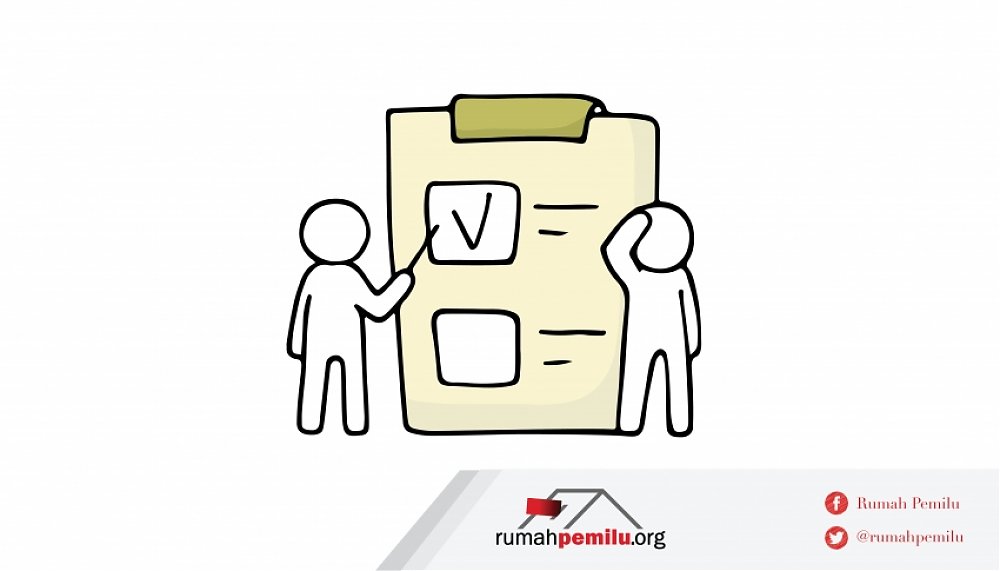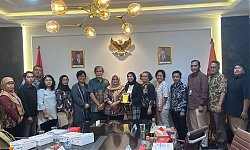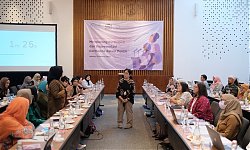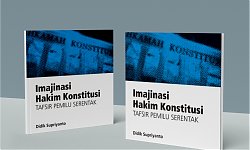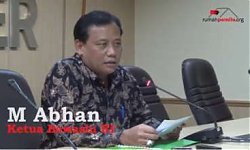Brazil will hold the second round of Presidential Elections on October 30, 2022. The former president of Brazil for the 2003-2011 period from the Workers' Party, Luiz Inácio Lula da Silva faced the incumbent president, Jail Bolsonaro, from the right wing. In the first round of the presidential election on October 2, about 20 percent of voters abstained, and nearly 5.5 million other voters casted blank or spoiled ballots even though there were 11 candidates. There are 156 million registered voters in this 2022 elections.
With Lula and Bolsonaro advancing to the second round, both parties are fighting over the votes of voters who previously voted for another candidate, voters who abstained and voters who rejected the election deliberately spoiled the vote by casting blank ballots. The total votes excluding support for Lula and Bolsonaro are 9.9 million votes.
Regarding rejection votes through blank votes, blank votes are possible in Brazil’s electronic voting system, namely direct recording electronic (DRE), by entering a random code. Blank votes will be recorded by DRE, because DRE allows blank vote input. However, blank votes and invalid votes or invalid votes will not be included in the vote counting process.
A phenomenon in Latin America, as well as in Indonesia, the rejection vote in various forms is often chosen by voters to show protest. Voting for the resistance, to borrow a term from Carlos Malamud, professor of American History at the Universidad Nacional de Educación a Distancia (UNED). Active voters come to polling stations, but to destroy ballots or give blank votes to punish the establishment, political elites, and political institutions that are considered corrupt. This phenomenon is increasing, along with increasing dissatisfaction due to the limited space for the public to be involved in public policy making. The absence of center axis candidates (Austria’s case when candidates in the 2016 presidential election came from the extreme left and extreme right axis) is also often the reason voters reject the election by ballot..
In the international world, the none of the above (NOTA) option is known on ballots. In the state of Nevada, United States, the NOTA option has existed since 1976, and NOTA has received the most votes in four elections. NOTA in India is a mandate from the decision of the Supreme Court of India in 2003. In Ukraine, the NOTA option is called “Against All”.
Another format of NOTA is in the 2022 Jersey Legislative Election. If a two-seat district has only two candidates or less, the ballot will contain the NOTA option. However, if there are more than two candidates, then there is no NOTE on the ballot. If NOTA gets the most votes, the recruitment of candidates for the Jersey Legislative Election will be reopened.
The recognition of the NOTA option by the Supreme Court of India in the election departs from the perspective that the right to vote includes the right not to vote for candidates, and the right to protection of confidentiality against votes against in elections. The Supreme Court of India views that voting is a formal expression of one's will or opinion in an electoral process. The right to refuse is part of freedom of speech and expression. As a form of protection for these rights, as well as protection for people who choose certain candidates, the right to refuse to vote is also protected by the principle of secrecy in elections. Anyone who refuses can convey his/her expression without fear of retaliation, criminalization, pressure or coercion from any party.
In research that examines voter behavior towards the NOTA option, two findings were found. First, that the existence of the NOTA option increases voter participation at polling stations. Even so, often the presence of a NOTA on the ballot has no impact on the election results. Second, NOTA reduces the votes of less popular candidates. Without the NOTA option on the ballot, voters who dislike options 1 and 2 (perhaps because they are both from the extreme left and right) will vote for the less popular alternative candidate. However, in the presence of a NOTA, the voter will cast his/her vote for the NOTA. The survey was conducted a few weeks before the 2016 US presidential election and the second round of the 2016 Austrian presidential election.
No NOTA in the 2024 Indonesia Elections, but…
In Indonesia, the rejection vote on the ballot was mixed with invalid votes due to voter confusion. Invalid votes in Indonesia's legislative elections are very high, exceeding the international average, of 3 to 4 percent. In the presidential election, in 2019, the invalid votes were 2.37 percent or 3.7 million votes. There are only two candidates in the 2019 presidential election.
The 2014 Presidential Election was the presidential election with the lowest voter turnout of all time, at 69.6 percent. Meanwhile, voter turnout in the 2019 presidential election was the highest with 81.9 percent.
In the 2020 Regional Head Elections (Pilkada), the three provinces with the highest invalid votes were South Kalimantan, Bengkulu, and Jambi, with 7.86 percent, 6.07 percent, and 5.38 percent, respectively. The number of candidate pairs in the three gubernatorial elections in these three provinces is no more than three. The voter turnout in the three provinces is 64 percent, 77.73 percent, and 67.90 percent.
Given the current political situation in Indonesia, the NOTA option on ballots is unlikely to be recognized and implemented by policy makers for the 2024 General Election and Pilkada. There is no revision of the Election Law and the Regional Head Election Law. However, there are practices carried out by France, Italy, Sweden, and Spain that can be adopted by the General Election Commission (KPU) in Indonesia. These four countries record blank ballots separately from damaged ballots. This makes the rejection votes in the voting clearly portrayed, without mixing with invalid votes because of the voters' ignorance of the correct way of voting.
Separate recording of blank ballots, ballots with the KPU logo being punched (without any other voting on the ballot), ballots with lots of markings on various columns of parties or pairs of candidates, ballot papers torn apart, and ballots with scribbles or writings indicating rejection of election or candidates may be made to distinguish it from other invalid ballots. At least, even if there is no NOTA option on the ballot, the vote against which is expressed through voting can be photographed more clearly.
The distinction of invalid votes because of voter confusion and political resistance is important to distinguish. Voter confusion relates to policies to change the electoral system or ballot design and election socialization, while vote refusal is related to reforming existing political parties, democracy, and government institutions.
This difference in recording will certainly increase the burden on the Voting Organizer Group (KPPS) officers. Five elections on the same day, legislative elections with a proportional candidate list system, a lot of administrative documents that must be fulfilled, and the need to resolve the objections of witnesses participating in the election at the polling station at the same time. The complexity of the electoral system chosen, which has an impact on the complexity of election management covers the issue of suffrage that needs to be expanded (read: a perspective that has been widely recognized by the international community that refusing is also part of the right to vote).
The ideal choice would be to simplify Indonesian elections, and recognize the “None of the Above” option on the ballot. There needs to be a democratic mechanism to evaluate democracy. There is no by election in Indonesia. Try to figure out what formal mechanism would be provided by the legislators. []
This article is translated by Catherine Natalia.

